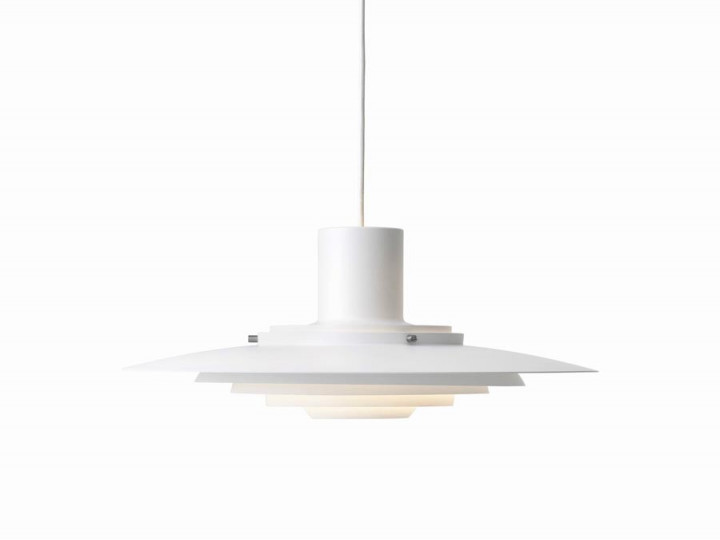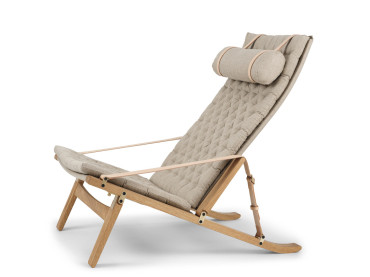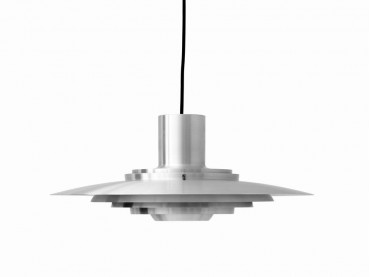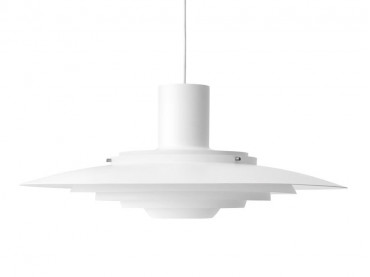Mid-Century modern scandinavian pendant lamp P376 KF1, Ø 47,5cm. New edition
Mid-Century modern scandinavian pendant lamp P376 KF1, Ø 47,5cm. New edition, by Preben Fabricius for And Tradition. Jørgen Kastholm (1931-2007) and Preben Juhl Fabricius (1931-1984) were driven by a mutual mission to make form a pure derivative of function. Both were architects, graduating from the Danish School of Interior Design where they studied under Finn Juhl and subsequently with Arne Jacobsen. The P376 pendant lamp is a perfect example of Kastholm & Fabricius’ subtle architectural slant on design. Originally conceived in 1963, five concentric shades create gradations of curves towards the middle of the lamp to emit a soft, diffused light. The discrete placement of the shades and the silky aluminium finish culminate in a cohesive expression that’s both iconic and enthralling.
Available in 2 dimesions and finishes : matt white or aluminium.
| Year | 1963 |
| Dimensions | Ø: 47.5cm/18.7in, H: 19cm/7.5in. Weight 3.70 kg. Voltage220-240V 50HZ. Light source & energy efficiency classE27 Max. 100W. Cord length400cm / 236.2in |
| Material | Lacquered metal & fabric cord. ColoursMatt white, Aluminium |
| Style | Classique Neuf |
| Origin | Denmark |
| Fournisseur | And Tradition |
Preben Fabricius
Fabricius was trained as a cabinetmaker by Niels Vodder before attending the School for Interior Design where he studied under Finn Juhl. It was there that he met the blacksmith Jørgen Kastholm. They had a common approach to furniture design, never wanting to compromise on aesthetics. In 1961, the pair set up a design studio in a Gentofte cellar without any firm arrangements with manufacturers. In 1965, they exhibited at the furniture fair in Fredericia where the German furniture manufacturer Alfred Kill noticed their work. Kill had a reputation for high quality but initially Favricius and Kastholm were not keen to design furniture for factory production. Only when Kill offered them DM 2,500 a month each, with no preconditions, did they agree to work for him. They travelled to Stuttgart with their first designs for production in Kill's factory in nearby Fellbach. Their international breakthrough came at the Cologne Fair in 1966 when they exhibited a whole series of office and home furniture leading to orders from ten large furniture concerns. Their minimalistic designs, both attractive and comfortable, were usually in steel and leather. The Tulip Chair, the Grasshopper Chair and the Scimitar Chair are among their most successful works.
The pieces of furniture they produced during their seven-year period of cooperation from 1961 to 1968 were so distinctive that many are still produced today as classics.
As a result of disagreements, the pair decided to terminate their cooperation in 1968. Fabricius was awarded the Illum Prize (1969) and, together with Jørgen Kastholm, the first German Gute Form prize for their FK Tulip chair (1969).
Fabricius died in March 1984 when he was only 52.
(wiki)





















